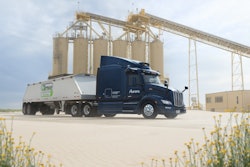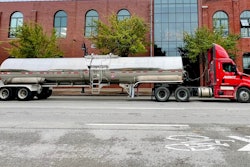After enduring over two years of freight recession, the trucking and logistics sector entered 2025 with cautious optimism. Market capacity and demand reached equilibrium, and rates began to show signs of recovery.
Unfortunately, the optimism was short-lived. A new wave of economic uncertainty emerged, which could breach the levees, causing stagnation in the freight market and potentially triggering a broader recession.
Resilience in today’s environment requires discipline and data-driven decisions to weather rising equipment and operating costs. To achieve this, many fleets have expanded their use of technology to gather the data insights necessary to prolong asset lifecycles and implement preventive cost-control measures.
This shift in strategy is evident in how fleets use trailer visibility platforms. Initially, they may have deployed the technology to improve asset utilization; however, the focus has since expanded to reducing asset maintenance costs and preventing equipment and cargo loss .
Extending asset lifecycles
When older assets are pushed further, the only way to get anticipated cost savings is by preventing unexpected failures.
In the current environment, fleets generally plan to hold onto trailers for 8 to 10 years, up from the traditional 5 to 6 years. This is showing in new trailer orders. OEMs are still working through 2024 backlogs, but orders for 2025 are sluggish, and the once-busy peak ordering season is stalling.
Soaring roadside repair costs make it economically necessary to prevent unplanned maintenance by closely monitoring trailer health and scheduling preventive maintenance at locations where fleets can obtain the lowest prices and fastest turnarounds.
According to Fullbay, shop labor rates in 2025 are up to a median of $134 per hour, representing a $9 increase from the previous year. Mobile and roadside repairs cost $135 per hour plus $2 per mile with an average margin of 21% on parts sales. The same research indicates that 31% of independent and in-house heavy-duty repair shops report servicing older vehicles more frequently than usual.
Trailer visibility systems support a cost-effective preventive maintenance strategy by providing real-time insights into:
- Mileage and utilization rates to enable fleets to anticipate wear on high-touch components, such as brakes and tires.
- Tire pressure monitoring to reduce the risk of blowouts and costly road calls.
- Electrical system diagnostics with alerts to address brake and marker light issues before they trigger DOT violations.
- Reefer-specific data, such as hours of operation, fuel usage, and error codes, to schedule service and manage temperature-sensitive cargo.
Ron Hall, vice president of equipment at Salt Lake City-based C.R. England (CCJ Top 250, No. 32), one of the largest truckload fleets in North America, notes that the fleet utilizes trailer visibility data from its ORBCOMM platform to track engine hour data on reefers, thereby distinguishing fuel economy performance between reefer providers.
Another essential use for the technology is identifying customer trailer abuse. Hall says C.R. England merges the dates, times, and locations from its trailer visibility system with trailer inspection forms that drivers complete on site to document damages, such as forklifts hitting trailer walls, to work with customers for reimbursement.
Security in an era of surging cargo crime
Inflation and other economic challenges have made cargo more valuable and vulnerable to theft. Cargo crime has exploded. One alarming trend is fictitious pickups, where criminals impersonate legitimate carriers, brokers, and drivers to steal trailers and cargo.
According to CargoNet, fraudulent pickups have surged by over 1,000% in the last two years. With high equipment costs and sensitive customer relationships, fleets cannot afford to lose trailers or cargo. Additionally, insurance costs are increasing, and some insurers may deny cargo claims if fleets have trailers and cargo stolen when drivers are off-route or absent during theft.
This is where trailer visibility systems have become indispensable. Unlike driver- or tractor-based systems, trailer-centric monitoring follows the freight, independent of who’s hauling it, providing continuous oversight of:
- Location and route adherence to spot and respond to unauthorized deviations.
- Unauthorized hookups to detect unknown tractors attempting to connect to fleet-owned trailers.
- Door sensors that notify dispatchers of unscheduled door openings and geofence alerts to detect unauthorized movements.
- Camera-based cargo sensors to detect tampering and document internal trailer activity.
With over 2,000 trailers and extensive cross-border operations, Transportation Services, Inc. (TSI), based in Romulus, Michigan, uses its trailer visibility platform to enforce no-stop rules, identify off-route activity, and provide customers with real-time shipment tracking.
“We believe our cross-border capabilities are unparalleled,” says CEO Michael Zavislak. “We get alerted when trailers cross geofences or stop at unauthorized sites. If something’s off, my ops team is immediately on the phone with the driver.”
As an example of how TSI utilizes cargo cameras, the fleet uncovered theft by employees of a customer. They were taking aluminum bars from trailers that TSI used for racking loads. The equipment was worth $4,000 per trailer. The problem disappeared when video footage provided proof.
In our recent report on combating the surge in trailer and cargo theft, we share additional prevention and recovery strategies from TSI and other fleets.
Insurance savings and customer trust
Preventing losses from cargo claims tied to damaged or spoiled goods is just as crucial as securing equipment and cargo. To this end, trailer visibility systems provide real-time insights and document the condition of freight from pickup to delivery.
With over 6,000 reefer trailers, C.R. England uses advanced trailer visibility tools to minimize claim losses caused by temperature excursions. After implementing trailer monitoring, the fleet reduced cargo claims by 44% in the first year, resulting in savings of hundreds of thousands of dollars.
Insurance providers notice when fleets proactively protect their assets. Visibility tools that log detailed location data, route compliance, and cargo conditions make it easier to prove proper handling and harder for underwriters to hike rates or deny coverage.
For shippers, especially those in the food, pharmaceutical, and automotive industries, visibility equals peace of mind. Some fleets offer self-service tracking portals that allow users to monitor the locations and estimated arrival times of loads, among other data points. TSI’s Michael Zavislak notes the daily benefits of giving customers access to its trailer visibility data.
“It alleviates stress and reduces the volume of calls to our customer service team,” he says.
Visibility as a strategic M&A advantage
As consolidation sweeps through the industry, trailer visibility systems can drive additional value for mergers and acquisitions. Fleets equipped with visibility tools can document trailer history, analyze usage patterns, maintain accurate records, and identify route limitations, such as avoiding entry into Mexico or Canada. This traceability enhances the resale value of assets and reassures buyers.
More importantly, these systems ensure that assets remain in good condition for an extended period. Fleets that utilize visibility tools tend to detect issues earlier, resolve faults before they escalate into failures, and avoid pitfalls that can lower equipment valuations.
As some fleets aim to expand while others seek an exit amid uncertain conditions, operational transparency can enhance the position of both sides in M&A deals.
A wise investment in an uncertain future
Few things are controllable in an industry at the mercy of macroeconomic tides. Freight rates will rise and fall. Regulatory demands will evolve. Still, how fleets manage assets, protect cargo, and deliver value to customers is all within reach.
Trailer visibility systems may have once been considered optional. Given the market's needs today, they can deliver foundational tools to run leaner, extend the life of aging equipment, safeguard freight from sophisticated theft rings, and deliver accountability in ways that customers, insurers, and fleet owners expect.
Gregg Plonisch is VP of Sales, North America Transportation for ORBCOMM, a provider of pioneering dry and reefer trailer and container visibility technology for the transportation industry.












